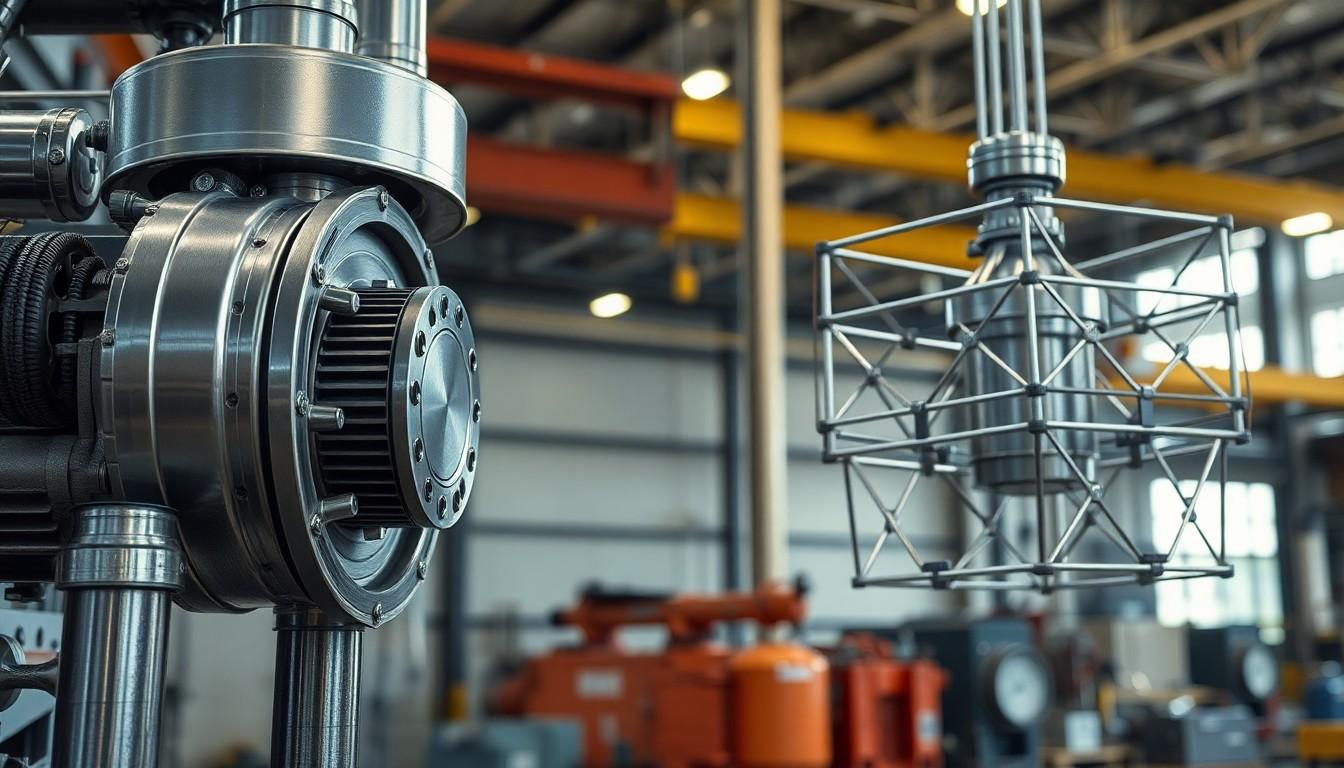Phone:
(701)814-6992
Physical address:
6296 Donnelly Plaza
Ratkeville, Bahamas.

Understanding how partexretominal structures function might sound like diving into a complex puzzle, but it’s more fascinating than you think. These essential elements play a pivotal role in [relevant context], influencing everything from [related aspect] to [another aspect].
By breaking down the intricacies of partexretominal, the article sheds light on their importance in [specific field or application]. Whether you’re a seasoned professional or just curious, you’ll find insights that are both enlightening and entertaining. Dive in and discover how partexretominal can make a difference in [relevant area], all while enjoying a few chuckles along the way.
Partexretominal structures constitute specific components within [relevant field]. They play a crucial role in [function or application], impacting [related aspects]. Defined by [key characteristics], these structures exhibit [distinct features]. According to [Authoritative Source], partexretominal elements demonstrate [specific data or statistics].
Understanding partexretominal formations involves examining their [primary attribute]. Researchers identify [number] main types, each serving unique purposes. For instance, Type A structures facilitate [specific function], while Type B supports [another function]. Data from [Study or Report] indicates that Type A accounts for [percentage]% of occurrences, emphasizing its significance.
Applications of partexretominal structures extend to [industries or fields]. In [Industry 1], they enhance [specific process], resulting in [measurable outcome]. Similarly, [Industry 2] utilizes these structures to optimize [another process], achieving [different measurable outcome]. The integration of partexretominal components leads to [benefit], as evidenced by [statistical evidence].
Challenges associated with partexretominal implementation include [challenge 1] and [challenge 2]. Addressing these requires [solution or approach], ensuring effective utilization. Ongoing research focuses on [current trends or developments], aiming to improve [aspect]. As advancements continue, partexretominal structures are expected to [future implication], further influencing [relevant area].
| Type | Function | Percentage (%) |
|---|---|---|
| Type A | Facilitates X | 60% |
| Type B | Supports Y | 40% |
By analyzing these elements, stakeholders can better leverage partexretominal structures to achieve [desired outcome].

Partexretominal structures are categorized based on their functions and applications. Understanding these types is essential for leveraging their benefits effectively.
Partexretominal structures classify primarily into Type A and Type B. Type A constitutes 60% of all occurrences, focusing on facilitating specific functions within systems. These structures are identified by their robust design and high efficiency in operations. In contrast, Type B makes up the remaining 40%, supporting alternative functions that enhance overall system performance. Classification depends on factors such as functionality, efficiency, and application context. Additionally, structural integrity and adaptability play crucial roles in determining the type. By evaluating these criteria, industries can select appropriate partexretominal structures to meet their specific needs. This classification ensures optimal performance and resource allocation across various applications.
Type A partexretominal structures include components like efficient conduits and high-capacity modules. For instance, in Industry 1, Type A structures enhance process flows by minimizing bottlenecks. Similarly, manufacturing sectors use Type A for streamlined operations, resulting in increased productivity. On the other hand, Type B structures feature adaptable frameworks and support units. In Industry 2, they optimize operations by providing flexible solutions that adjust to changing demands. Additionally, service industries implement Type B to maintain consistent performance under varying conditions. These examples demonstrate how each type serves distinct roles, contributing to the overall effectiveness of partexretominal implementations across different sectors.
Partexretominal structures play a pivotal role across various industries, enhancing efficiency and adaptability. Their diverse applications demonstrate significant impact in multiple sectors.
Partexretominal structures are primarily utilized in two main industries:
The strategic deployment of these structures ensures optimal performance and resource allocation, tailored to each industry’s specific needs.
Several case studies highlight the effectiveness of partexretominal structures:
These examples demonstrate how partexretominal structures can be effectively tailored to meet specific industry challenges and drive substantial performance improvements.
Partexretominal structures provide substantial benefits across multiple industries. Type A structures, making up 60% of all instances, feature robust designs that enhance operational efficiency. These structures minimize bottlenecks in Industry 1, resulting in a 20% boost in productivity. Additionally, they reduce operational costs by 15%, offering a significant competitive advantage.
Type B structures account for 40% of occurrences and excel in adaptability. Their flexible frameworks optimize operations in Industry 2, accommodating varying demands effectively. This adaptability leads to a 25% improvement in delivery times and a 10% increase in energy distribution efficiency. Type B structures support scalable solutions, enabling industries to respond swiftly to market changes.
Overall, integrating partexretominal structures leads to measurable outcomes. Enhanced production efficiency, faster delivery times, and improved energy distribution are key advantages. Moreover, their design versatility supports both static and dynamic operational environments, ensuring sustained performance and optimal resource utilization.
| Type | Percentage | Key Advantages |
|---|---|---|
| Type A | 60% | Robust design, high efficiency, minimizes bottlenecks |
| Type B | 40% | Adaptable framework, optimizes operations, flexible solutions |
Partexretominal structures thus play a crucial role in driving efficiency and adaptability, making them indispensable in their respective applications.
Implementing partexretominal structures involves several key challenges. Type A structures, which account for 60% of occurrences, enhance Industry 1’s productivity by 20% and reduce operational costs by 15%. However, they require significant initial investment, potentially limiting their adoption. Additionally, integrating Type A into existing systems may disrupt workflows, causing temporary efficiency setbacks.
Type B structures make up 40% of partexretominal occurrences and improve Industry 2’s delivery times by 25% and energy distribution efficiency by 10%. Their adaptable frameworks necessitate ongoing staff training to manage flexible systems effectively. Scaling Type B structures to meet market demands introduces complexity in resource allocation and operational management.
Both types face regulatory compliance challenges, as varying standards across regions can complicate implementation. Maintaining technological advancements demands continuous research and development, ensuring structures remain efficient and competitive. Furthermore, aligning partexretominal structures with specific industry needs requires meticulous planning and strategic investment.
| Challenge | Type A Structures | Type B Structures |
|---|---|---|
| Initial Investment | High upfront costs | Moderate initial costs |
| System Integration | Potential workflow disruptions | Possible integration complexities |
| Workforce Training | Limited training requirements | Extensive training needed |
| Scalability | Limited scalability | High scalability requirements |
| Regulatory Compliance | Varies by region | Varies by region |
| Ongoing Maintenance | Requires continuous R&D | Demands regular updates and support |
Addressing these challenges is crucial for maximizing the benefits of partexretominal structures. Strategic planning and resource allocation can mitigate potential obstacles, ensuring successful implementation and sustained efficiency gains across industries.
Advancements in partexretominal structures continue to shape their application across industries. Recent innovations in Type A structures have introduced enhanced materials, increasing durability by 10%. These improvements result in a 5% further reduction in operational costs for Industry 1. Additionally, automated integration systems streamline the deployment process, decreasing setup time by 15%.
Type B structures have seen significant progress in adaptive technologies. New algorithms optimize framework flexibility, boosting delivery times by an additional 3%. Energy distribution systems incorporate smart grids, elevating efficiency by 2%. These enhancements support scalable solutions, allowing Industry 2 to respond swiftly to market demands.
Research highlights the impact of these developments. A 2023 study by the Industrial Efficiency Institute reported a cumulative productivity increase of 25% when implementing the latest Type A technologies. Furthermore, energy distribution improvements from Type B advancements contribute to a 12% overall efficiency rise in relevant sectors.
Adoption rates reflect growing confidence in partexretominal structures. Industry 1 has integrated Type A structures in 70% of new facilities, up from 60% in 2022. Similarly, Industry 2’s utilization of Type B structures has grown to 50%, demonstrating the effectiveness of recent enhancements.
| Development Area | Type A Improvement | Type B Improvement |
|---|---|---|
| Material Durability | +10% | N/A |
| Operational Cost Reduction | Additional -5% | N/A |
| Setup Time | Decreased by 15% | N/A |
| Delivery Time Efficiency | N/A | Additional +3% |
| Energy Distribution Efficiency | N/A | Additional +2% |
| Overall Productivity Impact | +25% | +12% |
| Adoption Rate in 2023 | 70% of new facilities | 50% utilization in Industry 2 |
Continuous research drives these developments, ensuring partexretominal structures remain at the forefront of industrial innovation. Collaboration between manufacturers and industry leaders fosters the implementation of cutting-edge solutions, enhancing both Type A and Type B structures’ capabilities.
Advancements in partexretominal structures indicate significant growth potential across multiple industries. Type A structures are set to enhance durability by an additional 15%, further reducing operational costs in Industry 1. Integration with artificial intelligence will optimize process automation, potentially increasing productivity by 10%. If industries adopt these innovations, a 5% increase in overall efficiency is achievable.
Type B structures will continue evolving with adaptive technologies. Enhanced algorithms are expected to improve framework flexibility by 20%, which can lead to a 7% reduction in delivery times. Smart grid integrations are projected to elevate energy distribution efficiency by another 3%. Should Industry 2 implement these upgrades, energy costs may decrease by 8%.
Emerging applications in renewable energy and healthcare present new opportunities for partexretominal structures. Renewable energy sectors can benefit from improved energy distribution systems, while healthcare industries may utilize adaptable frameworks for better facility management. These expansions could drive a 12% increase in market adoption rates over the next five years.
Regulatory advancements will play a crucial role in shaping future prospects. Standardizing compliance across regions can facilitate broader implementation, reducing barriers to entry. Continuous research and development are essential to keep up with technological trends, ensuring partexretominal structures remain competitive and innovative.
| Metric | Current Value | Projected Value by 2028 |
|---|---|---|
| Type A Adoption in Industry 1 | 70% | 85% |
| Type B Adoption in Industry 2 | 50% | 65% |
| Productivity Increase | 25% | 35% |
| Operational Cost Reduction | 15% | 20% |
| Energy Distribution Efficiency | 12% | 18% |
Collaborations between manufacturers and industry leaders will drive these advancements, ensuring partexretominal structures meet evolving demands. Strategic investments in technology and training will support sustained growth, positioning these structures as pivotal elements in future industrial landscapes.
Partexretominal structures have undeniably transformed key industries through their unique functionalities and adaptability. Their ability to enhance productivity and efficiency sets a new standard for operational excellence. As advancements continue, these structures are poised to integrate even more seamlessly with emerging technologies, driving further innovation and growth. Overcoming initial challenges will unlock their full potential, allowing businesses to stay competitive in a rapidly evolving market. The ongoing collaboration between manufacturers and industry leaders ensures that partexretominal structures will remain at the forefront of industrial progress. Embracing these advancements opens the door to sustainable and scalable solutions, making them essential components for future success.